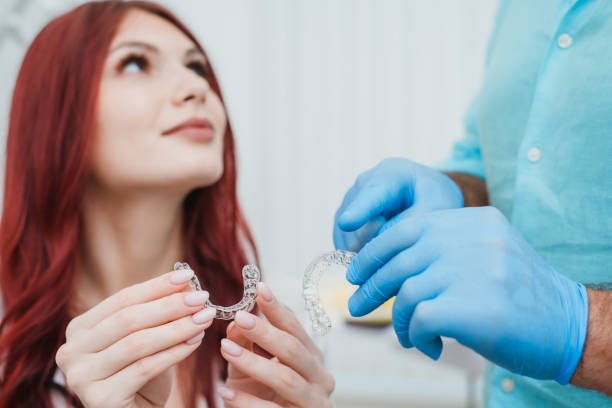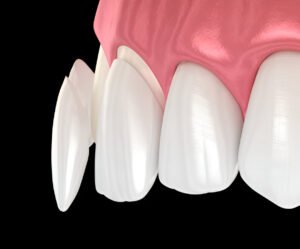Invisalign is a popular choice for those wanting a straight smile without the hassle of traditional braces. Made from clear, flexible plastic, these aligners are almost invisible. They can be removed for eating and brushing, making them very convenient. However, not all teeth are suitable for Invisalign treatment. Let’s explore which teeth might not qualify for this modern orthodontic solution.
Severely Misaligned Teeth
Invisalign works well for mild to moderate misalignment. If your teeth are very crooked, Invisalign might not be strong enough to move them into place. In such cases, traditional braces or other orthodontic treatments might be necessary. Invisalign can only handle some kinds of movement. It might struggle with severe cases. Orthodontists have special tools and techniques to address these issues. Invisalign cannot handle them.
Large Gaps Between Teeth
Invisalign can close small to medium gaps between teeth, but if the gaps are very large, it may not be effective. Large spaces often require more force to close, which Invisalign might not be able to provide. Orthodontists may recommend braces for these situations to ensure proper alignment. Braces can apply consistent pressure over time, gradually bringing the teeth closer together. Invisalign’s aligners might not create enough force to close big gaps. So, traditional methods are more suitable.
Teeth that Need to be Rotated
Sometimes, teeth grow in at odd angles and need to be rotated to fit properly. Invisalign can handle small rotations. But, if a tooth needs to be turned over 20 degrees, it might not work. Traditional braces can apply the necessary pressure to rotate the teeth correctly. This is because braces are fixed. They can exert continuous pressure, which makes them better for major rotations. Invisalign, being removable, may not maintain the needed pressure consistently.
Teeth with Severe Crowding
Crowded teeth can be tricky for Invisalign. While it can handle minor to moderate crowding, severe cases might be too challenging. When teeth are very close, there might not be enough space for the aligners to work well. An orthodontist might need to use braces or other methods to create the necessary space. Severe crowding often needs tooth extractions. Other interventions must happen before any orthodontic treatment. Once space is created, braces can then move the teeth into proper alignment.
Teeth with Significant Bite Issues
Invisalign is excellent for minor bite issues, such as slight overbites or underbites. However, if you have a big bite problem, like a severe overbite, underbite, or crossbite, Invisalign might not be the best choice. These problems often require more complex treatments that traditional braces can provide. Significant bite issues can affect how you eat, speak, and maintain oral hygiene. Addressing them might involve a mix of orthodontic techniques. These go beyond what Invisalign can offer.
Baby Teeth
Invisalign is typically used for adults and teenagers with all their permanent teeth. If you still have baby teeth, Invisalign might not be appropriate. Orthodontists usually wait until all the permanent teeth have come in. Then they start Invisalign treatment. This ensures that the aligners can effectively move and adjust the teeth. For younger patients, traditional braces might be recommended. They provide more flexibility in guiding the growth of the teeth and jaw.
Teeth with Dental Work
If you have extensive dental work, such as bridges or implants, Invisalign might not work as well. Bridges connect two or more teeth and don’t allow for the movement needed for Invisalign. Implants are fixed in the jawbone and also don’t move. In these cases, traditional braces might be more suitable. Dental work, like crowns and veneers, can also affect how Invisalign fits and works. Your orthodontist will need to carefully evaluate your current dental work. They will do this to find the best treatment plan.
Teeth with Short Roots
Teeth with short roots might not qualify for Invisalign. Short roots can be a result of previous dental treatments or natural development. Moving teeth with short roots can cause problems and might not be safe with Invisalign. An orthodontist will need to measure the root length. They will do this before deciding on the best treatment. Short roots can lead to increased risk of tooth mobility. They can also cause other problems during orthodontic treatment. Traditional braces might be considered safer in such cases.
Impacted Teeth
Impacted teeth are teeth that have not erupted properly and are stuck in the jawbone or gum. Invisalign cannot move impacted teeth. These teeth often require surgical intervention before any orthodontic treatment can begin. After the impacted tooth is fixed, an orthodontist can decide on the best action. This action might include using traditional braces. Impacted teeth cause pain. They also affect the alignment of other teeth. Treating them is a priority before any orthodontic solution.
Teeth with Gum Disease
Healthy gums are crucial for any orthodontic treatment. If you have gum disease, it needs to be treated before considering Invisalign. Gum disease can weaken the structures that support your teeth, making it risky to move them. Once the gum disease is under control. An orthodontist can check if you can use Invisalign. Healthy gums ensure that your teeth can be moved safely. Moving them should not cause more damage or problems. Regular dental check-ups and cleanings are essential. They keep gums healthy during any orthodontic treatment.
Conclusion
Invisalign is a great option for many people. They want to improve their smile discreetly. However, it’s not suitable for everyone. Severely misaligned teeth, large gaps, or teeth needing much rotation may not qualify for Invisalign. They have other complex dental issues. It’s vital to have a thorough talk with an orthodontist. They will find the best treatment for your dental needs. They will assess your teeth. Then, they will suggest the best way to get the perfect smile. If Invisalign won’t work, many other orthodontic options can help you. They can help you reach your dental goals.
By understanding Invisalign’s limits, you can decide about your braces. Your journey to a perfect smile might need different tools and techniques. But, with the help of a skilled orthodontist, you can get the results you want. It’s braces, Invisalign, or another method. The key is to find the right one for your unique dental needs.
Book Your Appointment Today!
Schedule Your Consultation with Moston Dental Practice Today!
If you’re considering Invisalign or other braces, Moston Dental Practice is here to help. Our team is experienced. They will fully assess your dental needs. Then, they will suggest the best treatments for you. Don’t wait to achieve the smile you’ve always wanted. Contact Moston Dental Practice today to schedule your consultation. This is the first step to a healthier, more confident smile. Our friendly staff is ready to assist you with any questions you may have. We look forward to helping you achieve your dental goals.




